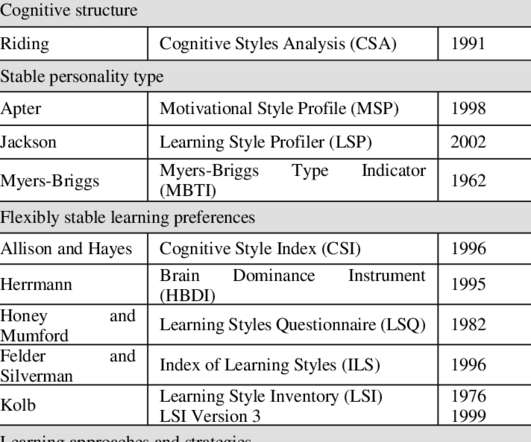Manage Cognitive Load in Digital Learning
B Online Learning
SEPTEMBER 7, 2017
CLT is “a universal set of instructional principles and evidence-based guidelines that offer the most efficient methods to design and deliver instructional environments in ways that best utilise the limited capacity of working memory” (Clark et. al, 2006, p.342). Other points to note about CLT: 1. References. Nguyen, F. &











































Let's personalize your content